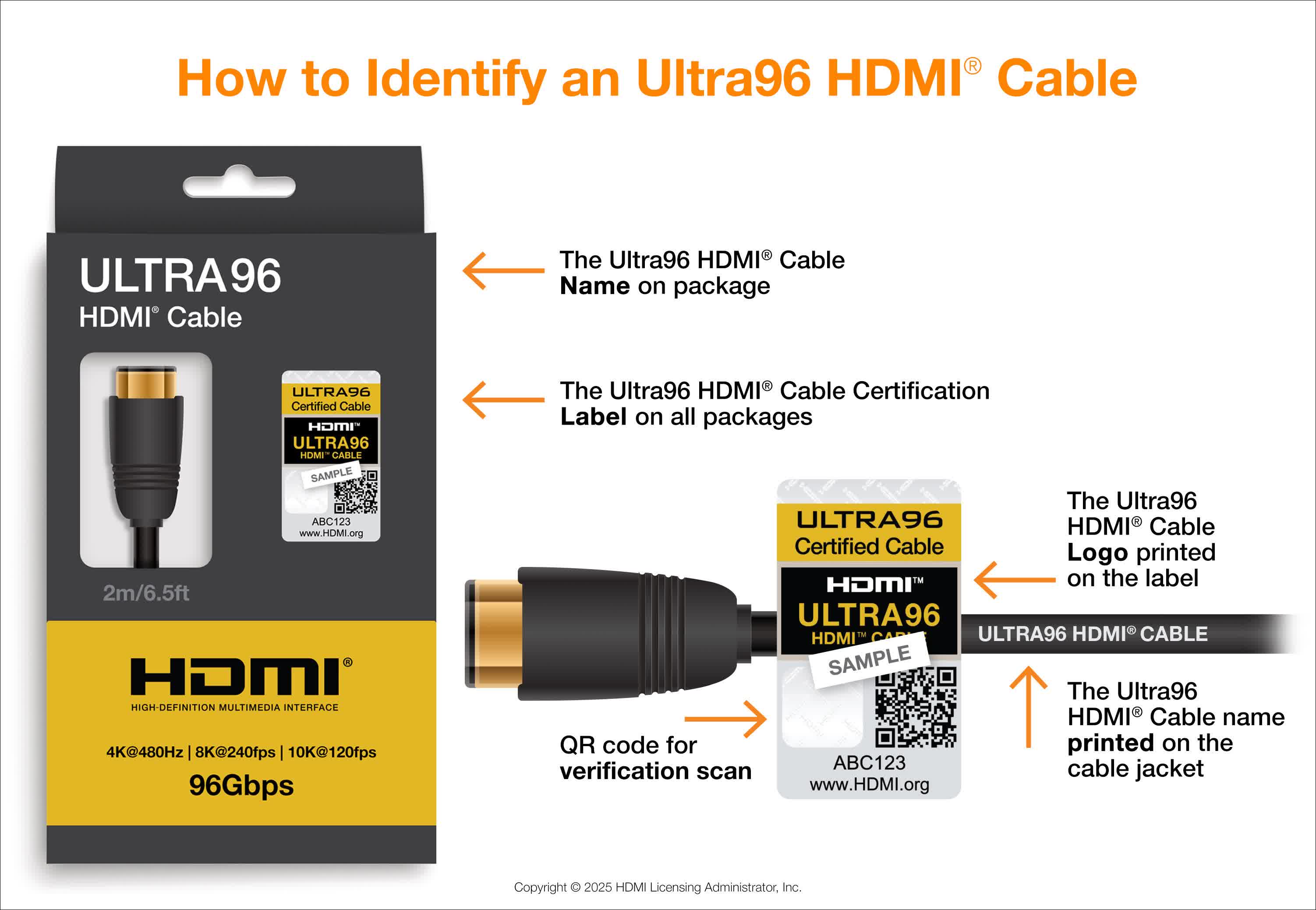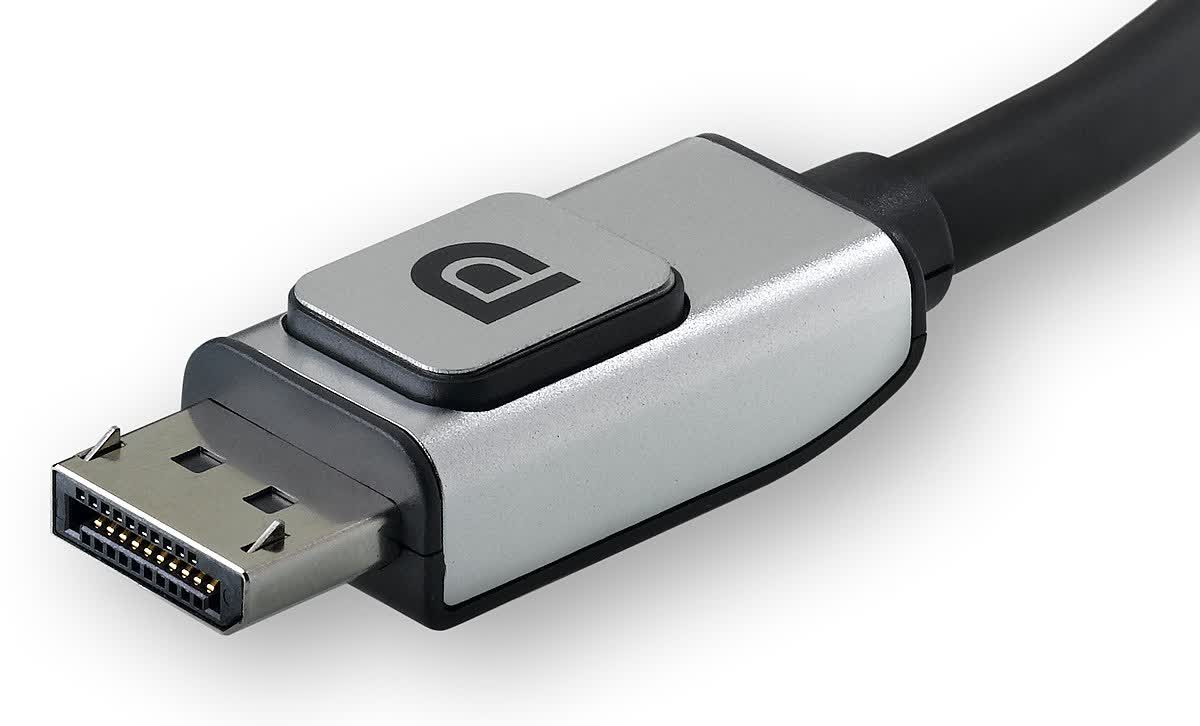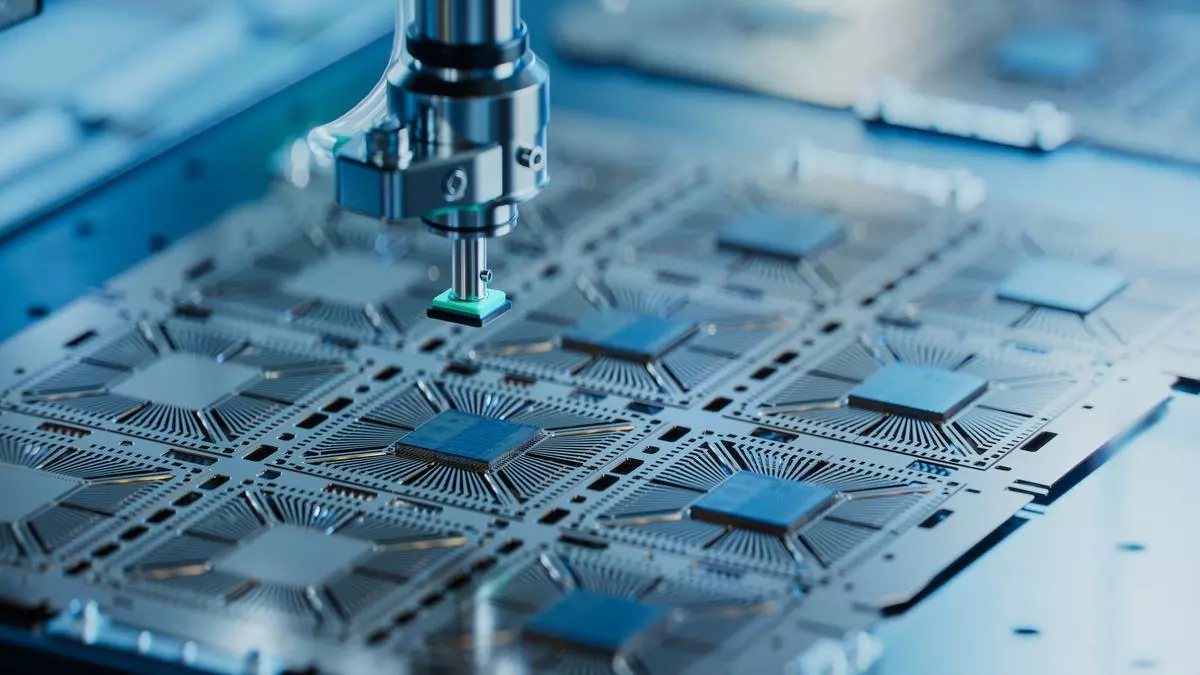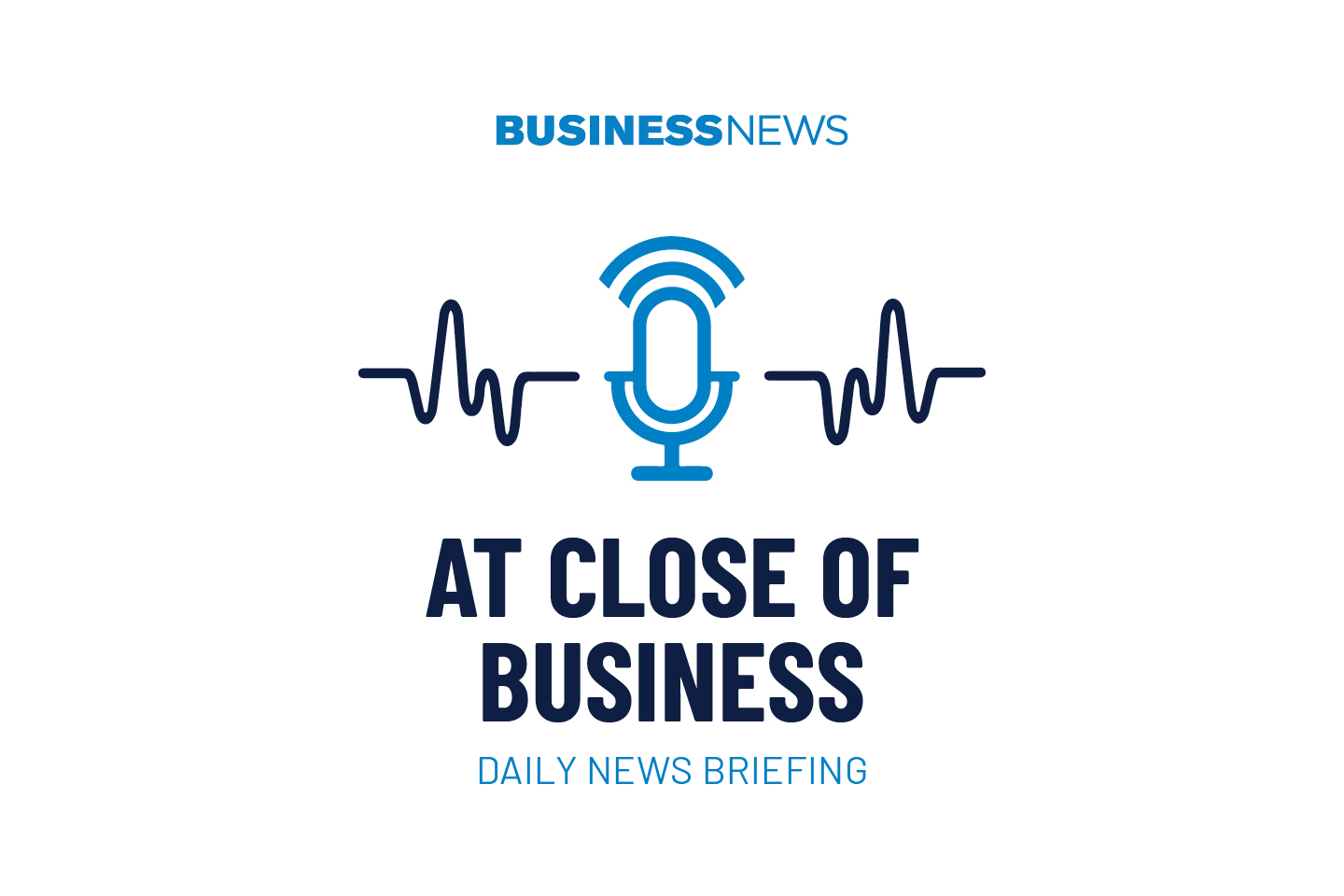What just happened? The announcements from CES are coming thick and fast. As expected, there have been updates to the two main display interface standards: HDMI and DisplayPort. The former, HDMI 2.2, offers increased bandwidth for a wide range of higher resolutions and refresh rates, while the latter, DisplayPort 2.1b, increases active cable lengths.
The HDMI Forum had hinted at the reveal of HDMI 2.2 at CES in December. As we predicted then, the latest standard does not require a new connector, but taking advantage of all its best features will require a new cable.

The new cable, called Ultra96, will enable HDMI 2.2’s increased bandwidth of 96Gbps. That’s double the 48Gbps bandwidth of HDMI 2.1 and is more than the 80Gbps supported by DisplayPort 2.1.

The resolution/refresh rate combinations mentioned in the HDMI Forum’s release for HDMI 2.2. include 4K at up to 480Hz, 8K at up to 240Hz, and 10K at 120Hz – resolution support reaches 16K. The current HDMI 2.1 standard supports up to 10K@120Hz using Display Stream Compression (DSC) and 8K@60Hz without DSC.
We currently don’t have any commercial monitors or displays that are capable of these specs, but they will be here eventually. Until then, the Forum writes that the 96Gbps of bandwidth will improve demanding data-intensive, immersive and virtual applications such as AR/VR/MR, spatial reality and light field displays. It will also be useful in various commercial applications such as large-scale digital signage, medical imaging and machine vision.
HDMI 2.2 also introduces Latency Indication Protocol (LIP). This improves audio and video synchronization, especially for multi-device systems such as those with AV receivers or a soundbar. LIP could be especially welcome by those whose systems can’t seem to precisely synchronize the dialogue being heard with the actors’ mouth movements.
HDMI 2.2 is set to arrive in the first half of this year, when companies will receive the full specifications. Don’t expect to see the latest standard implemented in devices such as monitors or graphics cards for quite a while, though. The gap between HDMI 2.1 and the first supported TVs was about 2 years, and it took around four years before gaining widespread adoption.
HDMI 2.2 is backward compatible, so it will work with anything featuring an older HDMI port. Buyers of an “Ultra96 Certified Cable” can use the HDMI Forum’s labelling program to confirm it’s the real thing by scanning the QR code on the box.

The new DisplayPort 2.1b specification is certainly a smaller upgrade, but still a welcome one. VESA has announced new DP80LL (“low loss”) active cables that enable up to four-lane UHBR20 link rate support, offering up to 80Gbps of bandwidth over lengths of up to three meters (9.4 feet). This triples the length of UHBR20 connections compared to existing DP80 passive cables.

Nvidia’s newly announced RTX 5000-series cards support DisplayPort 2.1b. VESA says Nvidia has been actively collaborating with the organization to ensure optimal performance and compatibility between the GPUs and DisplayPort 2.1b.








Leave a Comment